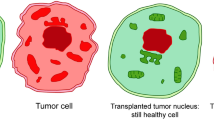Abstract
It is suggested that the proximate carcinogenic forms of dialkylnitrosamines are their oxidation products, which retain the alkylnitrosamino moiety, but have acquired a carbonyl function as a result of omega or beta oxidation of an alkyl group. Such metabolites resemble the locally acting carcinogenic “nitrosamides” and probably have become multifunctional. Their functional groups, being in close proximity, could ensure binding in a concerted manner with apposite reactive centres of chromatin to form a firm bridge, for example, between an amino group of nucleic acid base and thiols of protein chains.
Similar content being viewed by others
Rights and permissions
About this article
Cite this article
Schoental, R. The Mechanisms of Action of the Carcinogenic Nitroso and Related Compounds. Br J Cancer 28, 436–439 (1973). https://doi.org/10.1038/bjc.1973.169
Issue Date:
DOI: https://doi.org/10.1038/bjc.1973.169
- Springer Nature Limited
This article is cited by
-
Metabolism of methylazoxymethanol acetate in the F344 rat and strain-2 guinea pig and its inhibition by pyrazole and disulfiram
Journal of Cancer Research and Clinical Oncology (1984)
-
Metabolism of nitrosamines in vivo
Zeitschrift f�r Krebsforschung und Klinische Onkologie (1976)




